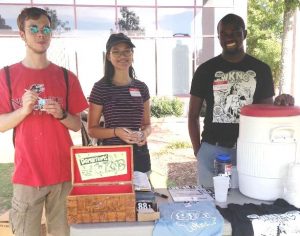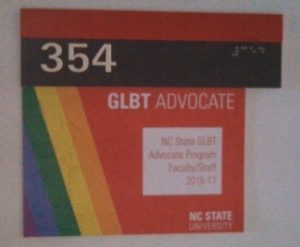September 7, 2016
Board Blog: Making College Media More Inclusive
Last Updated on September 7, 2016 by askcbiorg

[fusion_builder_container hundred_percent=”yes” overflow=”visible”][fusion_builder_row][fusion_builder_column type=”1_1″ background_position=”left top” background_color=”” border_size=”” border_color=”” border_style=”solid” spacing=”yes” background_image=”” background_repeat=”no-repeat” padding=”” margin_top=”0px” margin_bottom=”0px” class=”” id=”” animation_type=”” animation_speed=”0.3″ animation_direction=”left” hide_on_mobile=”no” center_content=”no” min_height=”none”]

Jamie Lynn Gilbert, CBI Secretary
Last year I made a pledge to make my college radio station a more welcoming and inclusive environment for all current and potential students. To help accomplish my goal, I enrolled in a 10-workshop training program through my school called the Equal Opportunity Institute to help develop my diversity skills. I completed a few required workshops and selected others that focused on my individual goal of using more inclusive language to recognize and respect diversity in gender identity and sexual orientation. I learned an incredible amount and want to share some tips to help make your college media outlet a more inclusive environment.
Take diversity training
Reading this list is a start, but to really increase your diversity awareness and make your college media outlet more inclusive you are going to need professional help. If your school offers a program like the Equal Opportunity Institute you should sign up for it. If not, seek out the GLBT Center, Women’s Center, Multicultural Student Affairs and other departments and see what trainings they offer. You don’t need to take all the workshops in one semester, but start identifying the workshops you might need or benefit most from and start there.
Plan diversity training for your staff
While it is important for you as a college media adviser/manager or student leader to understand diversity and inclusion, it is also important to train your staff. Plan a staff training that centers on diversity and ask representatives from campus departments to help. If those resources are more limited, the Poynter Institute’s News University offers some free and low-cost webinars on diversity issues, including Handling Race and Ethnicity and Getting Beyond Stereotypes: Better Disability Journalism. You’ll also want to share the Diversity Style Guide, a project of the Center for Integration and Improvement of Journalism at San Francisco State University.
Show your staff diversity
One of the best things my former boss taught me was to ensure all our marketing material represented a diverse staff. That doesn’t mean making sure the one international or disabled student on your staff is prominently featured in all your fliers, but to ensure that not all your smiling faces look the same. Take the same approach when you are staffing information tables. People will be more inclined to approach your table if they see people who look like them standing behind it.
Actively recruit diverse participants
If everyone on your staff looks the same, you have a problem. The best way to ensure diverse hiring is to have a diverse recruitment pool. Think about how you are advertising for staff recruitment events. Are you putting up some fliers and sending some tweets and that’s it? Consider sending recruitment notices to different departments that serve populations not well represented on your staff. If you wanted more journalism students you would send a notice to the journalism department so if you want more international/female/GLBT/Latinx/etc. students send a notice to the departments and other student groups that serve them. They can’t join your staff if they don’t know you are hiring.
Consider religious holidays when planning events
Most schools already accommodate for major Christian holidays Easter and Christmas, so no staff activities are likely to be scheduled then. Likewise, don’t schedule mandatory staff meetings on major Jewish holidays like Rosh Hashanah or Yom Kippur when some staff members may need to be with their families or at religious services. Or don’t schedule staff pizza parties during Ramadan, when Muslim students may be fasting from sunrise to sunset.
Cover non-majority groups
People sometimes complain that major news outlets don’t cover stories that appeal to minority audiences or only cover minority groups in a negative way. That doesn’t need to be the case at your college media outlet. Subscribe to as many campus departmental newsletters as you can and share information that positively portrays minority groups and their contributions on campus. Then send students out to cover their stories.
Use non-gendered language
When introducing yourself to a new group of staff members or trainees, provide your gender pronouns and ask them to do the same. This way it gets your staff to think about gender identity and provides staff who may use non-gendered pronouns like they/them/theirs a chance to share their identity once rather than individually dozens of times. Likewise, have your reporters verify gender pronouns when verifying names, titles and other information with sources.
 Be visible
Be visible
Show your support of diversity and inclusion. Part of my pledge as a NC State GLBT Advocate is to address inappropriate comments, language, jokes and incidents I observe on campus to help maintain an inclusive and welcoming environment. Make sure your staff and visitors are aware that your college media outlet strives to be a welcoming and inclusive space and inappropriate language and behavior will not be tolerated.
[/fusion_builder_column][/fusion_builder_row][/fusion_builder_container]






 Be visible
Be visible